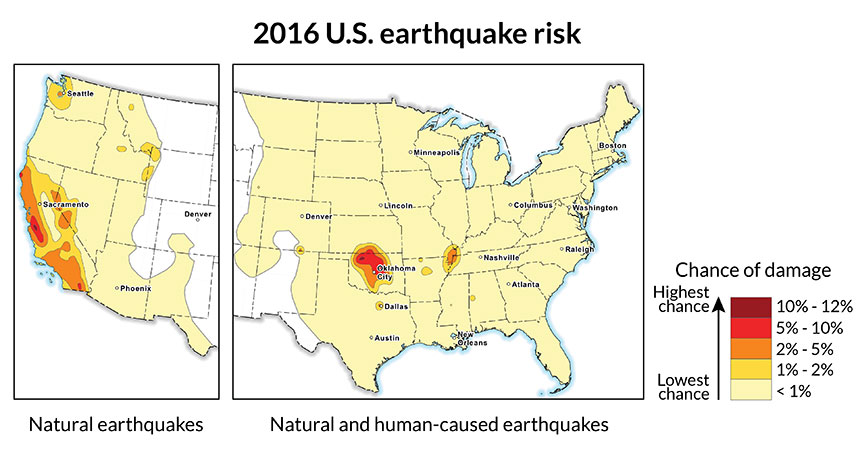Quake risk in parts of central U.S. as high as in fault-filled California

Northern Oklahoma is just as susceptible to a damaging earthquake within the next year as the most quake-prone areas of California. That’s because earthquakes are no longer just a natural hazard, the U.S. Geological Survey says. In its new quake hazards forecast released March 28, the agency for the first time has included artificially triggered seismicity.
An increased risk in the central United States largely stems from sites where fluids, such as wastewater from fracking, are injected underground (SN: 8/9/14, p. 13). Rising fluid pressure underground can unclamp faults and unleash earthquakes (SN: 7/11/15, p. 10). From 1973 to 2008, an average of 24 potentially damaging quakes rattled the central United States each year. From 2009 to 2015, an uptick in fracking activity helped skyrocket that number to 318 annual quakes on average, with a record-setting 1,010 tremors in 2015 alone. Around 7 million people currently live and work in central and eastern U.S. areas vulnerable to shakes stemming from earthquakes roughly above magnitude 2.7, USGS scientists estimate.
Human-caused quakes aren’t as powerful as their natural counterparts (the strongest induced quake in the United States clocked in at magnitude 5.6 in 2011 compared with the magnitude 7.8 San Francisco temblor in 1906, for instance). But the potential for more powerful shakes exists, the scientists warn. The new hazard assessment should help regulators revise building codes to better prepare for the rising risk.